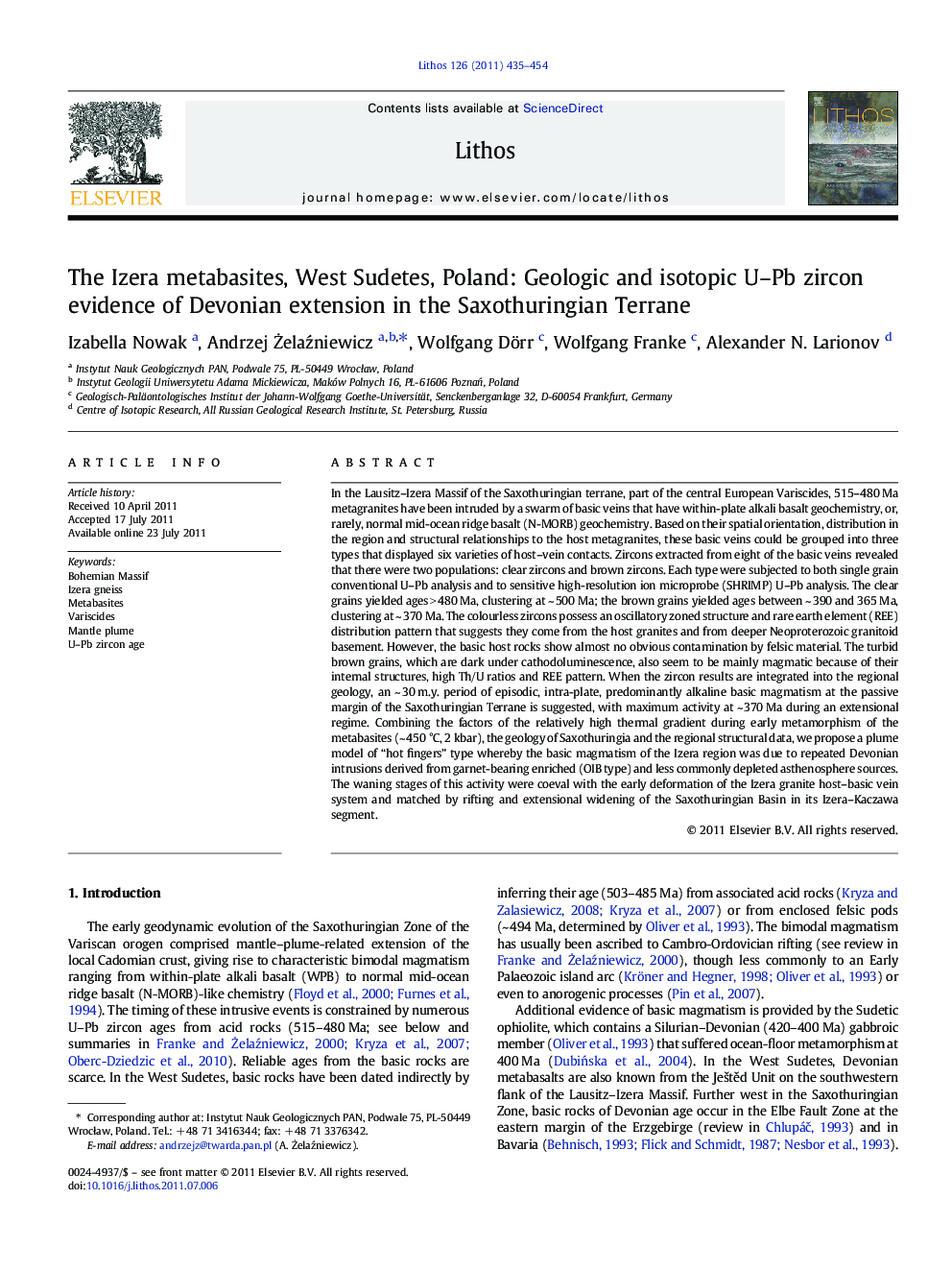| کد مقاله | کد نشریه | سال انتشار | مقاله انگلیسی | نسخه تمام متن |
|---|---|---|---|---|
| 4716727 | 1638716 | 2011 | 20 صفحه PDF | دانلود رایگان |

In the Lausitz–Izera Massif of the Saxothuringian terrane, part of the central European Variscides, 515–480 Ma metagranites have been intruded by a swarm of basic veins that have within-plate alkali basalt geochemistry, or, rarely, normal mid-ocean ridge basalt (N-MORB) geochemistry. Based on their spatial orientation, distribution in the region and structural relationships to the host metagranites, these basic veins could be grouped into three types that displayed six varieties of host–vein contacts. Zircons extracted from eight of the basic veins revealed that there were two populations: clear zircons and brown zircons. Each type were subjected to both single grain conventional U–Pb analysis and to sensitive high-resolution ion microprobe (SHRIMP) U–Pb analysis. The clear grains yielded ages > 480 Ma, clustering at ~ 500 Ma; the brown grains yielded ages between ~ 390 and 365 Ma, clustering at ~ 370 Ma. The colourless zircons possess an oscillatory zoned structure and rare earth element (REE) distribution pattern that suggests they come from the host granites and from deeper Neoproterozoic granitoid basement. However, the basic host rocks show almost no obvious contamination by felsic material. The turbid brown grains, which are dark under cathodoluminescence, also seem to be mainly magmatic because of their internal structures, high Th/U ratios and REE pattern. When the zircon results are integrated into the regional geology, an ~ 30 m.y. period of episodic, intra-plate, predominantly alkaline basic magmatism at the passive margin of the Saxothuringian Terrane is suggested, with maximum activity at ~ 370 Ma during an extensional regime. Combining the factors of the relatively high thermal gradient during early metamorphism of the metabasites (~ 450 °C, 2 kbar), the geology of Saxothuringia and the regional structural data, we propose a plume model of “hot fingers” type whereby the basic magmatism of the Izera region was due to repeated Devonian intrusions derived from garnet-bearing enriched (OIB type) and less commonly depleted asthenosphere sources. The waning stages of this activity were coeval with the early deformation of the Izera granite host–basic vein system and matched by rifting and extensional widening of the Saxothuringian Basin in its Izera–Kaczawa segment.
► In the Izera region, West Sudetes, basic veins intruded ~ 500 Ma granite.
► Zircons retrieved from the veins yielded ~ 500 Ma and ~ 370 Ma ages for colourless and brown grains, respectively.
► High Th/U ratios and REE pattern show that both the types of zircons are magmatic.
► The older type came from the country rocks while the other recorded time of basite intrusions.
► It was connected with plume-related magmatism and crustal extension in the Devonian.
Journal: Lithos - Volume 126, Issues 3–4, October 2011, Pages 435–454